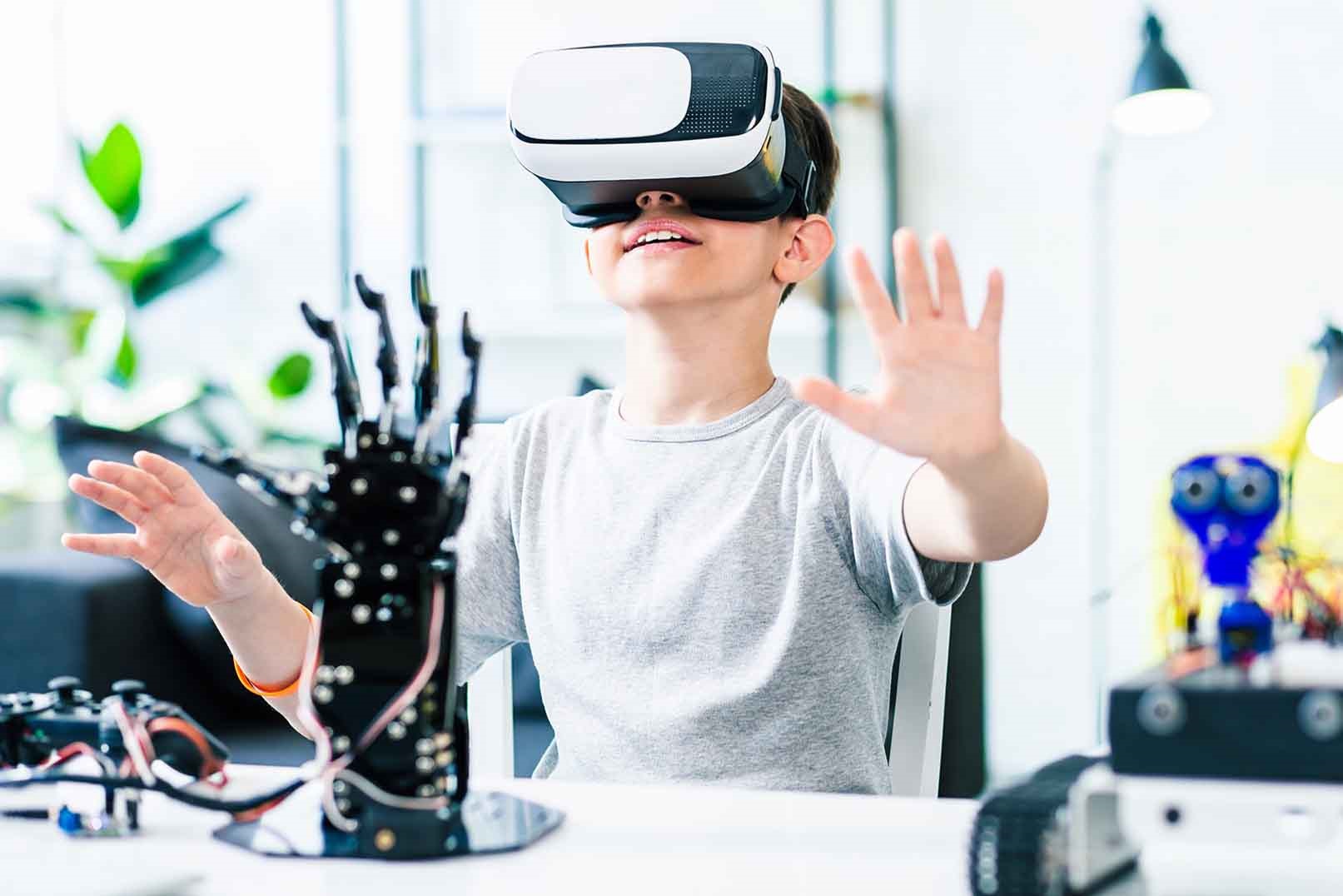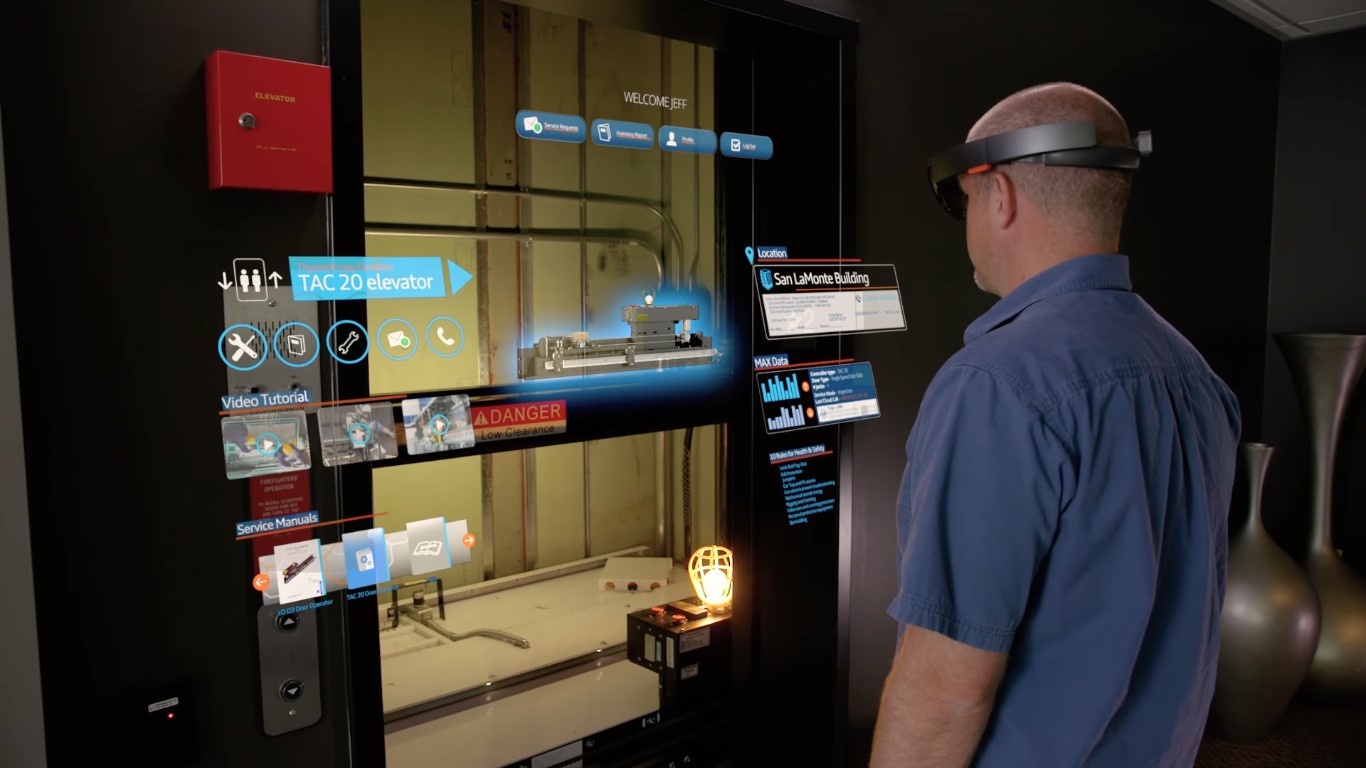Home>Latest News>Technology Trends>The Power of Augmented Reality Technology


Technology Trends
The Power of Augmented Reality Technology
Modified: September 5, 2024
Discover the latest technology trends and the power of augmented reality technology in shaping the future. Stay ahead with the latest advancements.
(Many of the links in this article redirect to a specific reviewed product. Your purchase of these products through affiliate links helps to generate commission for Techsplurge.com, at no extra cost. Learn more)
Table of Contents
The Power of Augmented Reality Technology
Augmented reality (AR) has been a buzzword in the tech industry for several years, and its impact is only growing stronger. From enhancing shopping experiences to transforming healthcare, AR technology is changing various aspects of our lives. This article will explore the world of augmented reality, covering its definition, applications, and future prospects.
What is Augmented Reality?
Augmented reality integrates digital information with the user's environment in real-time. Unlike virtual reality (VR), which creates a completely artificial environment, AR users experience a real-world setting with generated perceptual information overlaid on top. This technology uses computer hardware and software to combine digital information with the real-world environment, enhancing the user's experience through visual, sound, and other sensory elements.
History of Augmented Reality
The term "augmented reality" was coined by Boeing Computer Services, Research and Technology employee Thomas Caudell in 1990 to describe how head-mounted displays worked for electricians assembling complicated wiring harnesses. One of the first commercial applications of AR technology was the yellow first-down marker that began appearing in televised football games in 1998. Since then, AR has evolved significantly, with smartphone games like Pokémon Go and retail store AR apps becoming household names.
Applications of Augmented Reality
Augmented reality has a wide range of applications across various industries. Here are some of the most notable examples:
Retail and Marketing
In the retail sector, AR is used to enhance the consumer shopping experience. For instance, store catalog apps allow consumers to visualize what different products would look like in different environments. When buying furniture, shoppers can point their camera to the appropriate room, and the product will appear in the foreground, giving them a better idea of how it fits into their space. Retailers like Target and IKEA use ARKit, Apple’s open-source mobile AR development tool set, in their flagship AR shopping apps for iPhone and iPad.
Read more: The Advantages of Augmented Reality
Healthcare
Augmented reality has also made significant inroads in the healthcare sector. AR apps enable users to see highly detailed, 3D images of different body systems when they hover their mobile devices over a target image. This use of AR has become a powerful learning tool for training medical professionals. For example, medical students can use AR to study the human body in a more interactive and immersive way, which can improve their understanding and retention of anatomical structures.
Education
In education, AR is being used to create more engaging and interactive learning experiences. Students can use AR to visualize complex concepts and objects in 3D, making it easier to understand abstract ideas. For instance, students can point their camera at a textbook page and see additional information or animations that enhance their learning experience.
Manufacturing and Industry
In manufacturing and industry, AR is used to improve efficiency and accuracy. For example, warehouse workers can wear glasses that show them directions to the precise location of an item in the warehouse. This reduces the time spent searching for items and increases productivity. AR is also used in gas and oil industries for tasks such as inspecting equipment and monitoring pipelines.
Tourism
Tourism is another industry where AR is making a significant impact. Travelers can use AR apps to get information about historical landmarks, museums, and other tourist attractions. For example, they can point their camera at a statue or monument and see additional information about its history and significance.
Read more: AR Technology: Enhancing the Future
Examples of Augmented Reality
Several examples illustrate the versatility and potential of AR technology:
Pokémon Go
Pokémon Go is one of the most popular AR games ever created. It uses the player's location and camera to superimpose Pokémon into the real world. Players can catch Pokémon by throwing virtual Poké Balls at them, which appear on their screens as if they are in the real world.
NFL Broadcasts
The National Football League (NFL) uses AR technology to better analyze plays during broadcasts. The yellow first-down marker, mentioned earlier, is an example of this. This technology helps viewers understand the game better by overlaying digital information onto the real-world environment.
IKEA Place
IKEA Place is an AR app developed by IKEA that allows users to see how furniture would look in their home before making a purchase. Users can point their camera at a room, and the furniture will appear in 3D, giving them a better idea of how it fits into their space.
Read more: The Power of Augmented Reality Advertising
Target App
The Target retail app features See it in Your Space, which lets users see how products would look in their home. This feature uses AR to enhance the shopping experience by providing a more realistic view of products before purchase.
Future of Augmented Reality
The future of AR technology is exciting and full of possibilities. Here are some potential advancements and trends:
Advancements in Hardware
One of the key factors driving the growth of AR is the improvement in hardware. More powerful and lighter devices are being developed, which will enhance the AR experience. For example, the Apple Vision Pro, released in February 2024, is a significant step forward in AR headsets, offering a more immersive experience with improved image and video capture capabilities.
Artificial Intelligence Integration
Artificial intelligence (AI) is playing a crucial role in the development of AR. AI is being used for face and room scanning, object detection and labeling, and text recognition. This integration will make AR more sophisticated and user-friendly, enabling it to handle complex tasks with ease.
Read more: The Power of Android Augmented Reality
5G Networks
The expansion of 5G networks will significantly support cloud-based AR experiences by providing higher data speeds and lower latency. This will enable more seamless and efficient AR applications, making them more accessible to a wider audience.
Mixed Reality
Mixed reality (MR) is a combination of AR and VR. It creates a hybrid environment where virtual objects interact with real-world objects. For example, using a VR headset while seeing virtual projections of objects on your desk can create an immersive experience where you feel like you are interacting with both virtual and real-world objects simultaneously.
Challenges and Limitations
While AR technology has made significant strides, there are still several challenges and limitations that need to be addressed:
Cost
One of the major challenges is the cost of AR devices. High-end AR headsets like the Apple Vision Pro are priced at around $3,499, which makes them inaccessible to many consumers. However, it is expected that Apple will produce a non-Pro variant at a more affordable price in the future.
Read more: Augmented Reality Business Card
Privacy Concerns
Another significant challenge is privacy. AR devices often require access to personal data, which raises concerns about data privacy and security. Companies need to ensure that they handle user data responsibly and transparently to build trust with their customers.
Technical Limitations
Technical limitations such as camera quality, processing power, and battery life can also hinder the adoption of AR technology. However, advancements in hardware and software are continuously addressing these issues, making AR more practical and user-friendly.
Augmented reality is transforming various industries and aspects of our lives. From enhancing shopping experiences to changing healthcare, AR technology is proving to be a powerful tool. As hardware improves, AI integration increases, and 5G networks expand, we can expect even more sophisticated and immersive AR experiences in the future. While there are challenges to be addressed, the potential of AR is vast, and it is likely to continue shaping our world in significant ways.
The power of augmented reality technology lies in its ability to blend the digital and physical worlds, creating new and innovative ways to interact with information and objects. Moving forward, addressing the challenges and limitations while harnessing the full potential of this technology will create a more immersive and interactive future.











